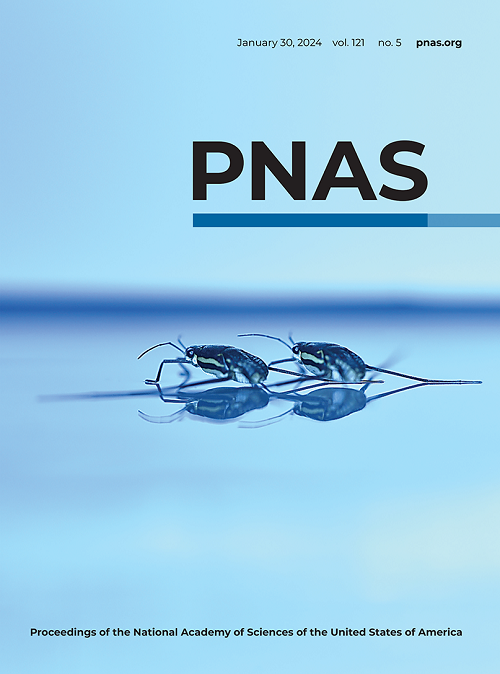Tai/NCOA2 suppresses the Hedgehog pathway by directly targeting the transcription factor Ci/GLI
IF 9.4
1区 综合性期刊
Q1 MULTIDISCIPLINARY SCIENCES
Proceedings of the National Academy of Sciences of the United States of America
Pub Date : 2024-11-12
DOI:10.1073/pnas.2409380121
引用次数: 0
Abstract
The Hedgehog (Hh) pathway plays diverse roles in cellular processes by activating the transcription factor Cubitus interruptus (Ci). Abnormal regulation of this pathway has been linked to various human diseases. While previous studies have focused on how Ci is regulated in the cytoplasm, the control of nuclear Ci remains poorly understood. In this study, we have found that the transcriptional cofactor Taiman (Tai) functions as an inhibitor of the Hh pathway. Tai interferes with the response of Hh signal, rather than Hh secretion. Our epistatic analyses reveal that Tai works in parallel with Ci to reduce its activity, thereby counteracting organ overgrowth and the activation of target genes caused by Ci overexpression. Specifically, Tai interacts with Ci to decrease its binding to target gene promoters. The Hh signal weakens the interaction between Ci and Tai, releasing the inhibition on Ci. Importantly, this regulatory mechanism is conserved fromTai/NCOA2通过直接靶向转录因子Ci/GLI抑制刺猬通路
刺猬(Hh)通路通过激活转录因子 Cubitus interruptus(Ci)在细胞过程中发挥着多种作用。该通路的异常调控与多种人类疾病有关。以往的研究主要关注 Ci 在细胞质中的调控方式,但对细胞核 Ci 的调控仍知之甚少。在这项研究中,我们发现转录辅助因子泰曼(Tai)具有抑制 Hh 通路的功能。Tai干扰的是Hh信号的响应,而不是Hh的分泌。我们的表观分析表明,Tai 与 Ci 同时发挥作用,降低 Ci 的活性,从而抵消 Ci 过表达引起的器官过度生长和靶基因激活。具体来说,Tai与Ci相互作用,减少其与靶基因启动子的结合。Hh 信号会削弱 Ci 与 Tai 之间的相互作用,从而解除对 Ci 的抑制。重要的是,这种调控机制从果蝇到哺乳动物细胞都是保守的。此外,NCOA1-3是哺乳动物中果蝇蛋白Tai的直向同源物,但只有NCOA2在抑制Hh通路中发挥类似的作用。这些发现揭示了调节核Ci转录活性的另一种途径。
本文章由计算机程序翻译,如有差异,请以英文原文为准。
求助全文
约1分钟内获得全文
求助全文
来源期刊
CiteScore
19.00
自引率
0.90%
发文量
3575
审稿时长
2.5 months
期刊介绍:
The Proceedings of the National Academy of Sciences (PNAS), a peer-reviewed journal of the National Academy of Sciences (NAS), serves as an authoritative source for high-impact, original research across the biological, physical, and social sciences. With a global scope, the journal welcomes submissions from researchers worldwide, making it an inclusive platform for advancing scientific knowledge.

 求助内容:
求助内容: 应助结果提醒方式:
应助结果提醒方式:


